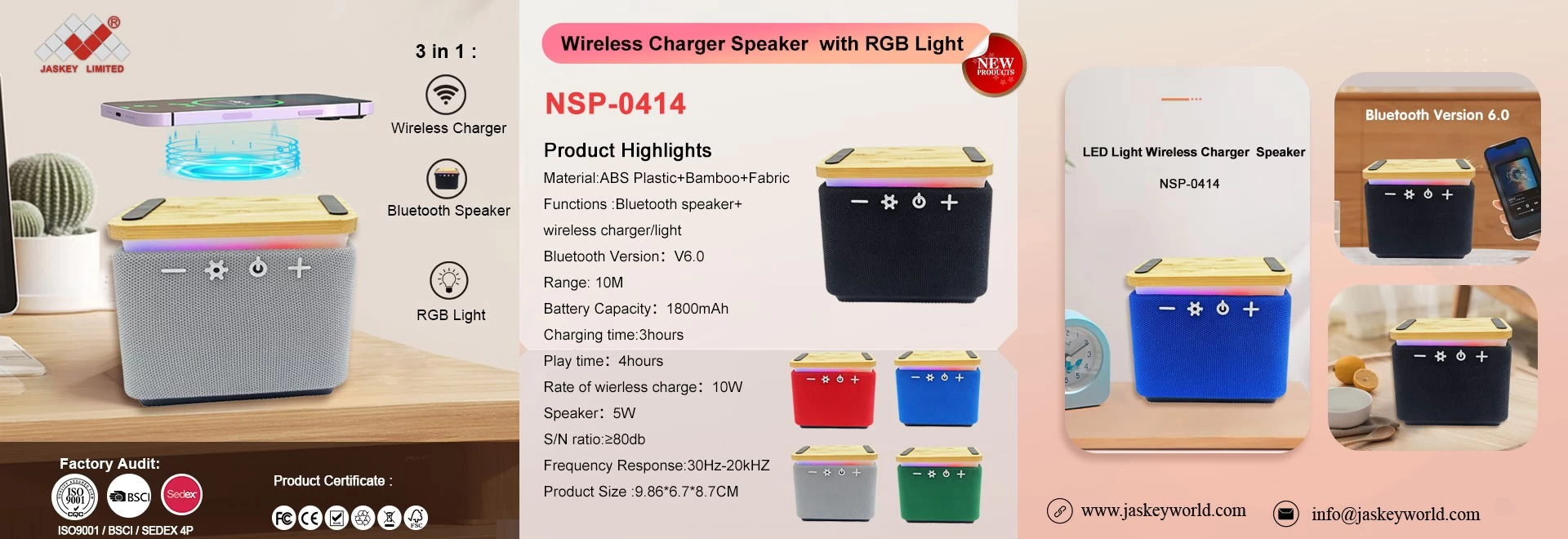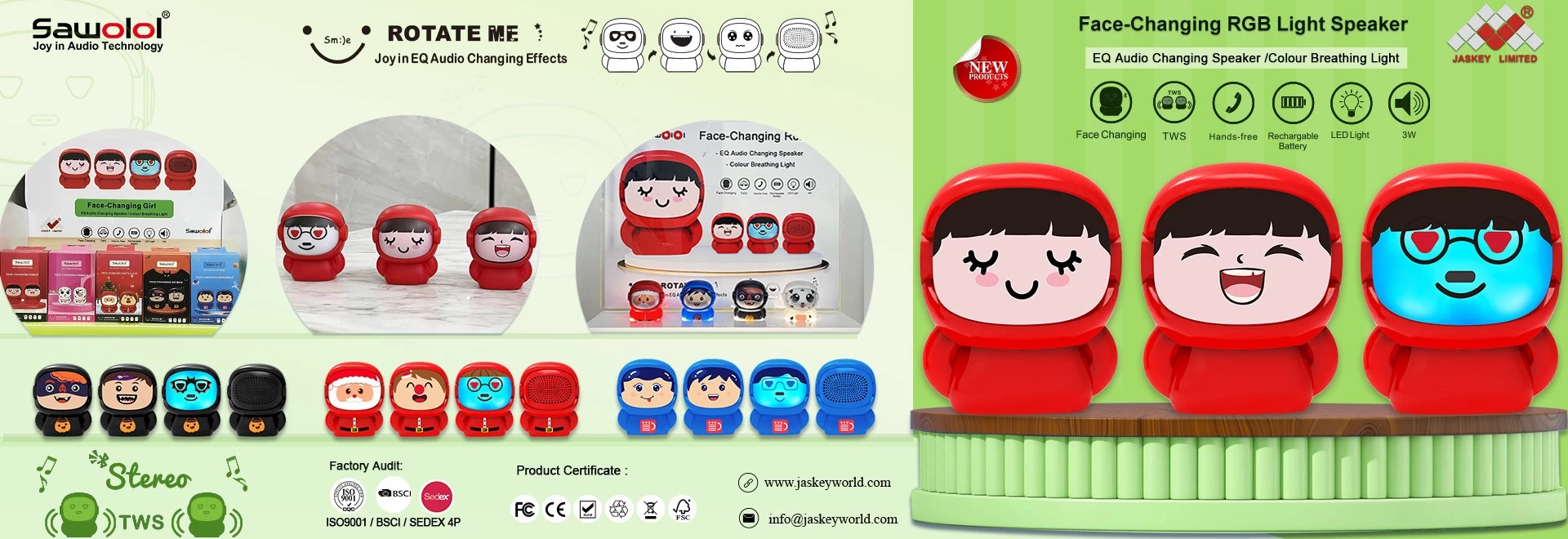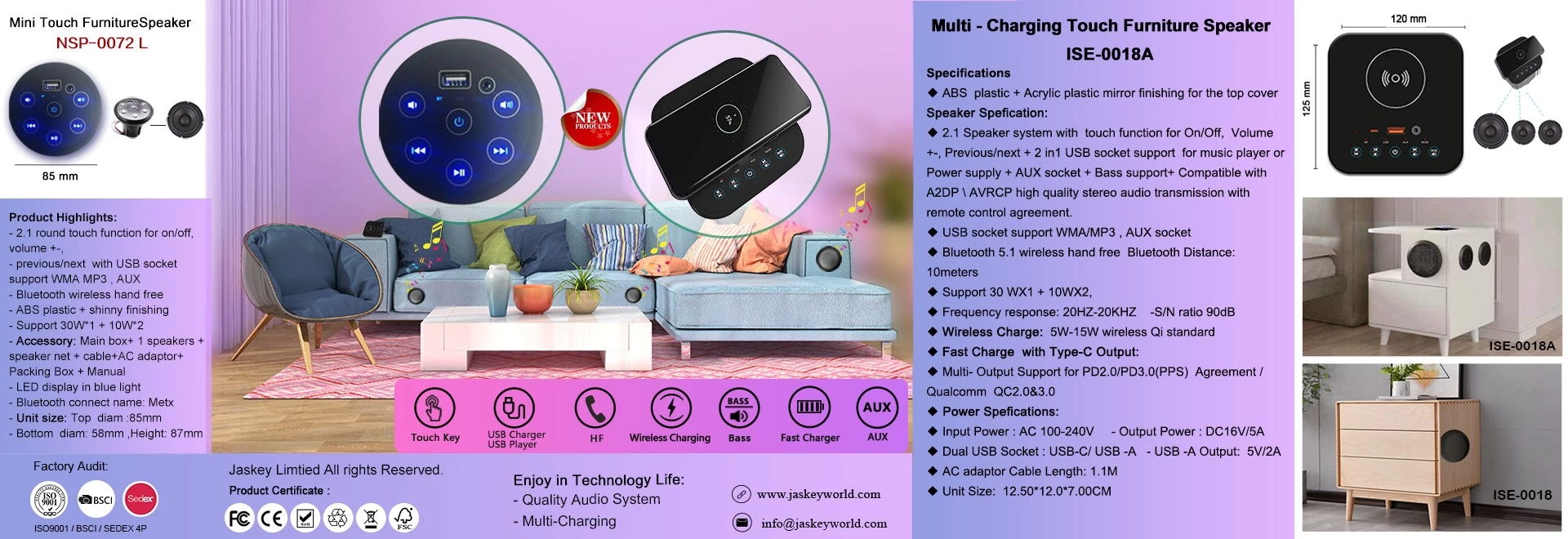Several methods to eliminate the noise of dancing bluetooth speaker system
In dancing bluetooth speaker systems such as stage performances and live sound reinforcement, the noise problem is a common and very headache problem. The noise generated by a dancing bluetooth speaker system is different. It may come from many aspects. The dancing bluetooth speaker should analyze and judge the more complicated situations, and deal with them separately. General noise may come from three aspects: one is the improper connection of the equipment; the other is the inherent noise of the equipment itself; the third is the interference noise of the power supply.
The specific processing methods are introduced below.
1. Eliminate noise caused by improper connection of equipment
In the dancing bluetooth speaker system, there is a common problem with the interconnection of devices. If the connection is improper, the system indicators will decrease and noise will be generated. In severe cases, the device may even fail to work properly. When connecting, do the following:
1. Impedance matching
In the dancing bluetooth speaker system, almost all devices use a jumper method, that is, the output impedance of the device is designed to be very small, and the input impedance is very large. This is because in the system, unless the signal is transmitted over a long distance, it is generally treated as a short line. Moreover, the signal level is low, requiring high-quality signal transmission, and the change of the load basically does not affect the signal quality. When the signal source is designed as a constant voltage source, or the load is much larger than the internal impedance of the signal source, the above requirements can be met. In fact, the impedance of professional dancing bluetooth speaker devices are designed according to the above principles, and the device interconnection adopts a jumper method, which is the impedance matching of dancing bluetooth speaker devices. When designing a sound reinforcement system, there is generally no need to consider impedance issues. However, when the output of one device needs to be connected to multiple devices, that is, when a signal source drives several loads, an active or passive audio signal distributor must be used to meet the requirements of device impedance matching (if there are two devices, Generally, it can be directly connected to the output terminal of the front-end equipment). The power amplifier and the speaker are connected according to the nominal output impedance and the input impedance of the speaker. The output impedance of the power amplifier has two types, 4Ω and 8Ω, which can be connected to 4Ω speakers or 8Ω speakers. When connected to a 4Ω speaker, the output power of the power amplifier is greater than that of 8Ω. Two 8Ω speakers can be connected in parallel to the output end of the power amplifier, and they are in a 4Ω working state. It must be noted that when the speakers are connected in parallel, the impedance will decrease, and the parallel equivalent impedance is not less than the nominal minimum output impedance of the power amplifier, otherwise it will cause the load to be overloaded and fail to work normally. When using 4Ω load impedance, the required transmission line impedance is twice as low as 8Ω. In a high-quality dancing bluetooth speaker system, the transmission impedance at 4Ω output should not exceed 0.2Ω (not counting the internal resistance of the amplifier). If the transmission is less than 100m, the cross-section is required to be no less than 9mm2. If you want to reduce its cross-section, you need to use 8Ω output instead of 4Ω output, then the cable cross-sectional area can be halved. The contact resistance at both ends of the transmission line is also required to be small. When preparing the dancing bluetooth speaker system for a performance, it was found that the noise was large. The connectors at both ends of the transmission line were replaced with better gold-plated connectors, and the noise was significantly reduced.

2. Level matching
When dancing bluetooth speaker devices are interconnected, level matching is also important. If the match is not good, it may be insufficient excitation, or overload and serious distortion will occur, which will make the system unable to work normally. To achieve level matching, it is not only necessary to match under the rated signal signal state, but also when the signal has a spike, no overload occurs. The crest factor of a high-quality system should be considered at least as 10dB. Modern dancing bluetooth speaker equipment is designed according to the standard, and you only need to pay attention to the equipment selection and system tuning to meet the requirements of level matching.
3. Balance and imbalance
Dancing bluetooth speaker devices usually have two connection methods, balanced and unbalanced. When there is common mode interference, since the interference signals received on the two balanced terminals have similar values and opposite polarities, the interference signals can cancel each other out on the load of balanced transmission. Therefore, the balanced circuit has better anti-interference ability. In important performances, balanced input and output should be used as much as possible.
4. Shield
The metal foreign guests of the equipment should be properly grounded, and the grounding resistance should be less than 4Ω, and no interference noise can be introduced due to the grounding.
The powerful high-frequency radio waves from the outside world will also cause high-frequency radio wave interference to the dancing bluetooth speaker system, especially when wireless microphones are used. The radio waves from the outside world such as public security, firefighting, and taxi call systems will receive the wireless microphone. Cause interference and generate noise. It is recommended to select a wireless microphone that can be freely adjusted for both the transmitting frequency and the receiving frequency.











